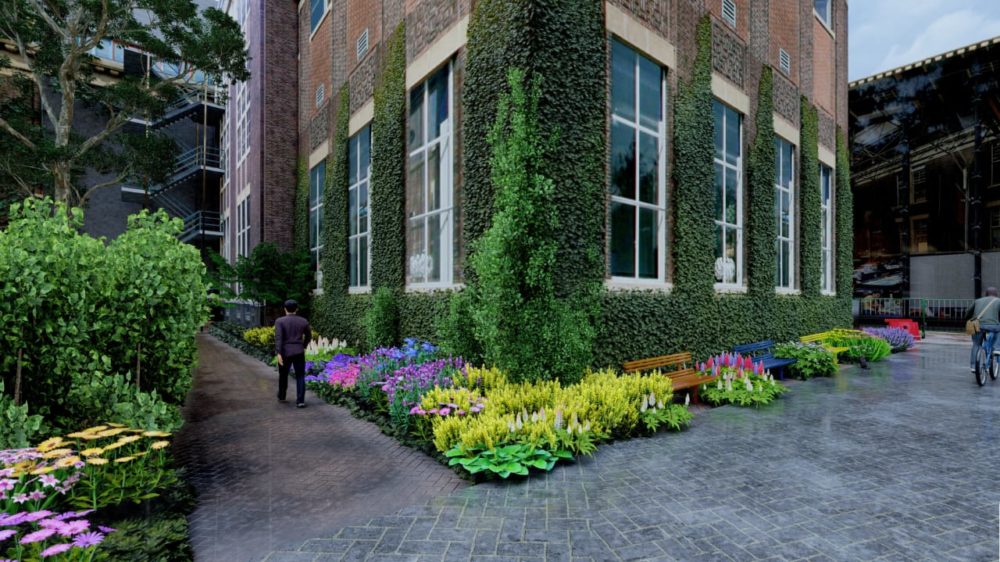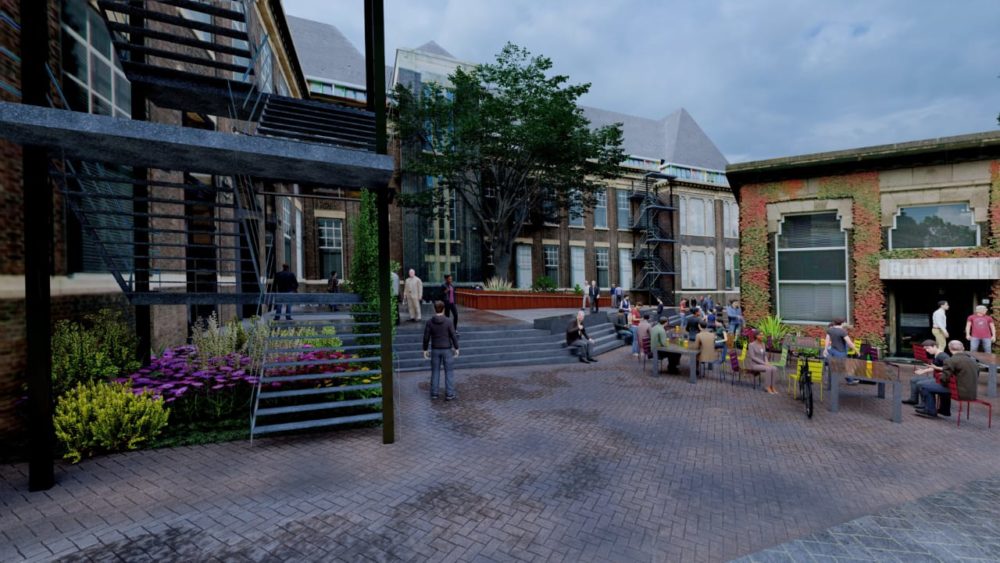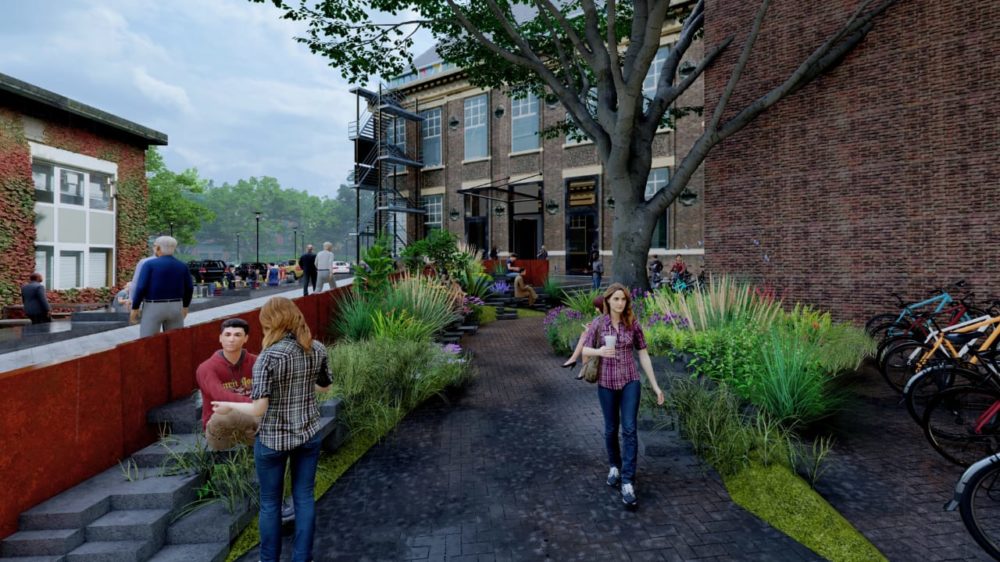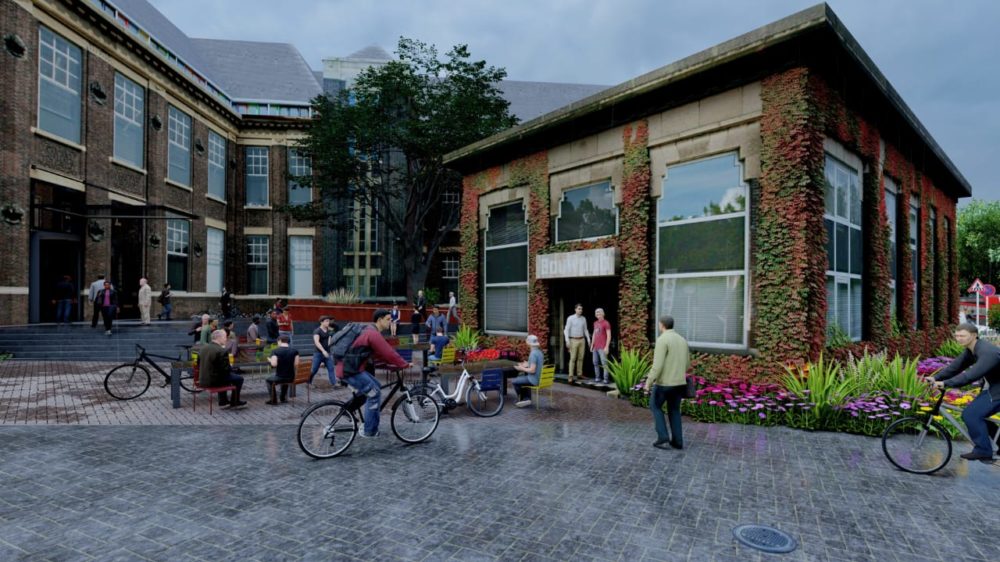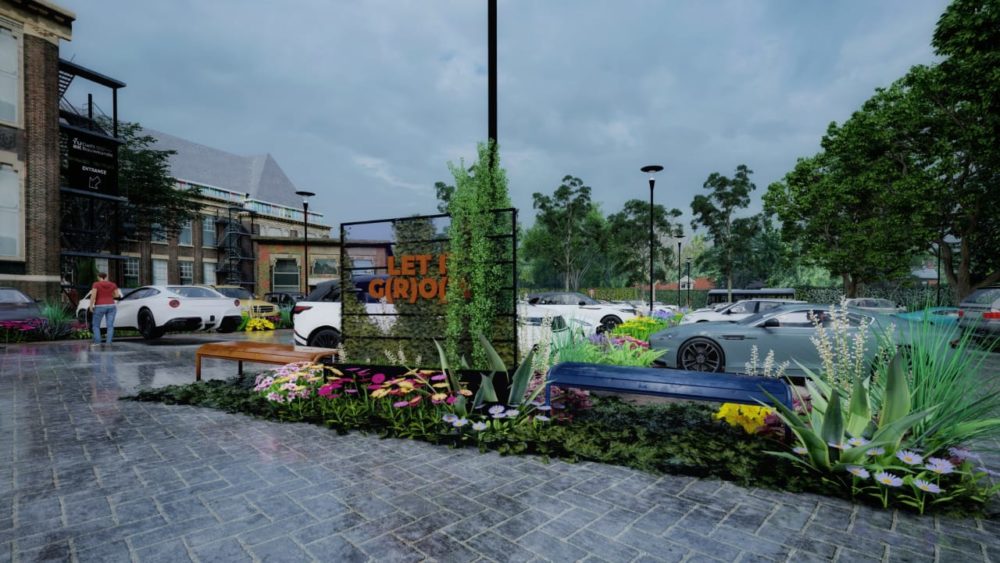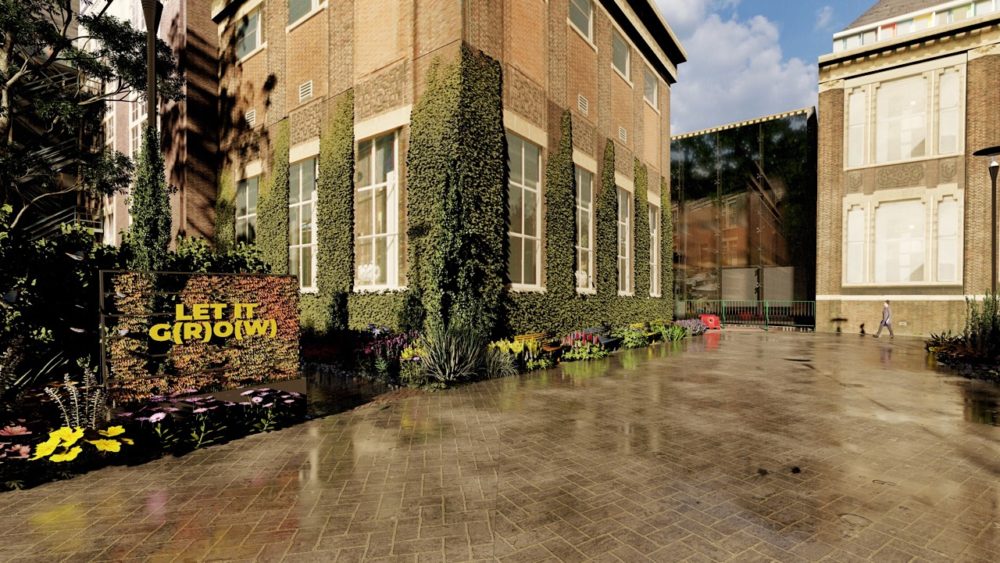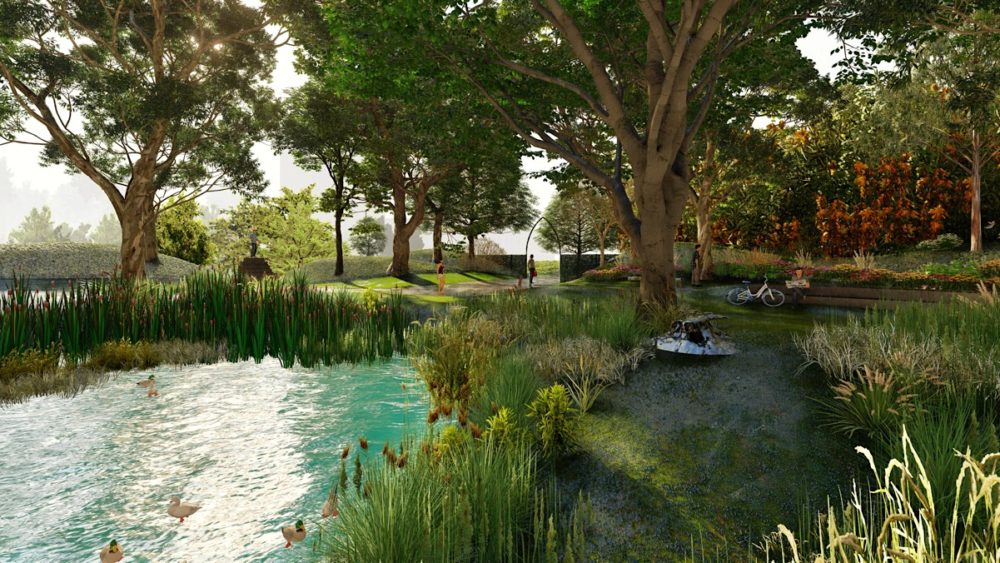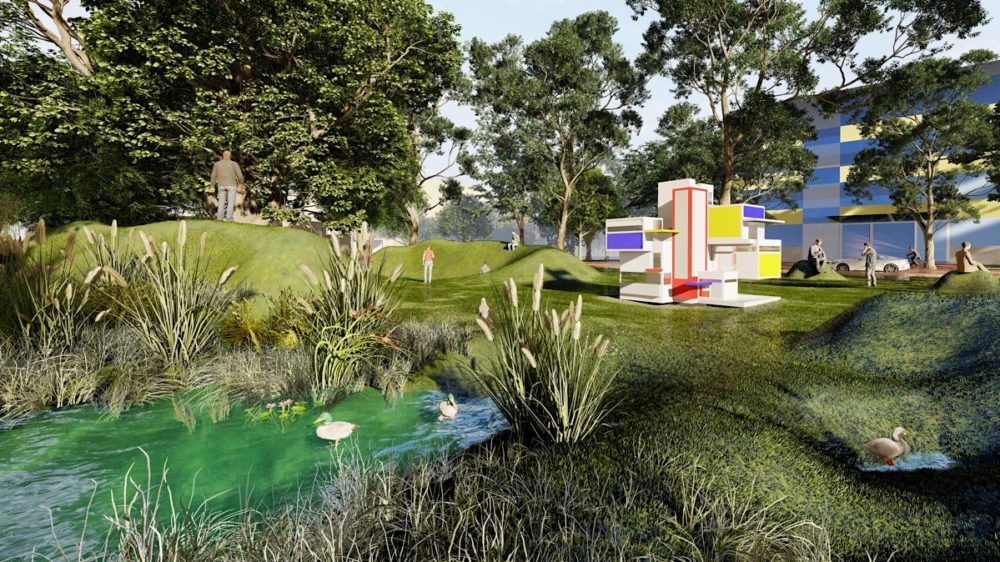VR Lab
The goal of the team is to show, or rather experience, the possible future for the chosen design sites. Because of circumstances, the visits on site weren’t possible for most of us. Therefore, we decided to have people experience the designs through Virtual Reality. The concept of ‘The Art of Letting G(r)o(w)’, was interpreted in different ways, but had similar approaches on each of the three sites. Each of the sites likewise have their own unique traits, visible in the immersive view; the Architecture Faculty with its parking lot was the most heavily paved site and directly related to a building. The Rietveld monument site is an open field next to a canal with an iconic sculpture on campus, opening the intervention to gradients. The Mien Ruys Park is a site heavily defined by its playful topography and green environment. This difference in location is very visible in the immersive experience and shows the adaptability and flexibility of the concept of ‘The Art of Letting G(r)o(w)’.
In the process, we converted the sketches and drawings of the designs to 3D models using SketchUp and Rhino. Through tips, tricks and advice from collaborated experts from the TU Delft’s VR Zone, we learned about different options on how to translate these models into VR. The main aim was to make this accessible for everyone, even for those who have no access to VR Goggles/Oculus Rift Viewers, which is in fact the most of us.
The most crucial steps in converting the 3D models into VR were the right rendering settings and creating a realistic environment. We did this by using a student licensed version of Lumion 10, a very easy to use rendering software for Architects and Urban/Landscape Designers. After hours of fine-tuning and trial and error, we managed to create real-life-like 360° immersive worlds for each of the design interventions on campus. The products are made public through Iris VR Viewer. The images can be viewed in any other 360° image viewer as well.
It was indeed a daring step to try out this new and state of art way of communicating design through VR technology for the first time. Although, ideally, it would have been a full virtual experience, the 360° views offer a great experience of the future of the Eco-Campus as well. In the end, we are very satisfied with the delivered products and hope the future students also build upon this, to create bigger and better things.
VR made by:
Director: Gary Gilson
Producers: Anne Mieke, Gary Gilson, Loen Sung

